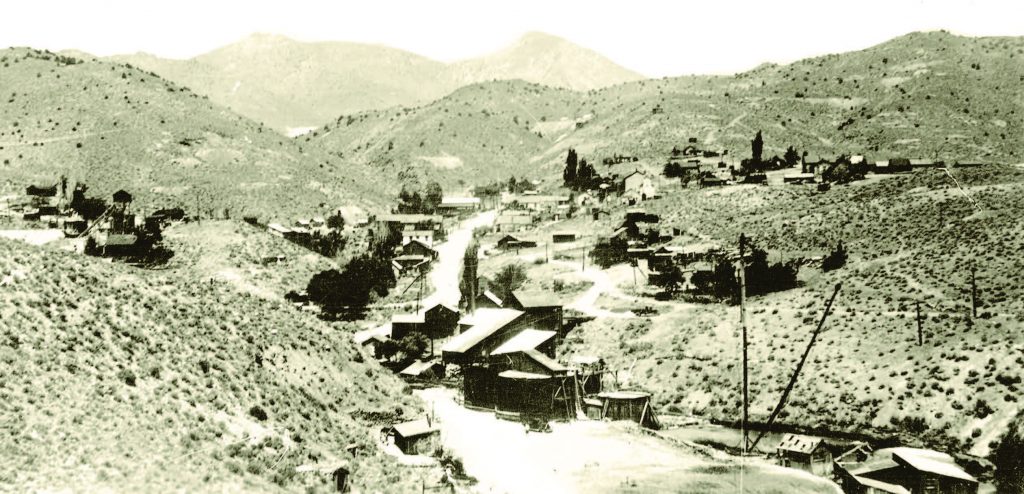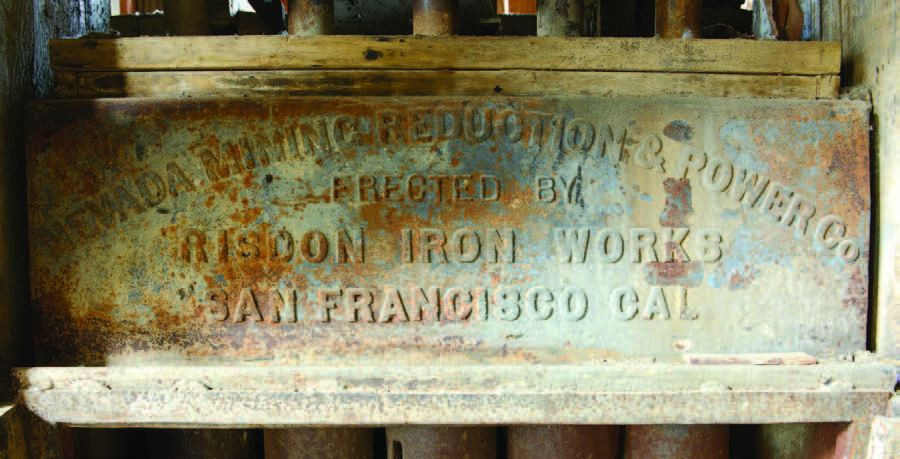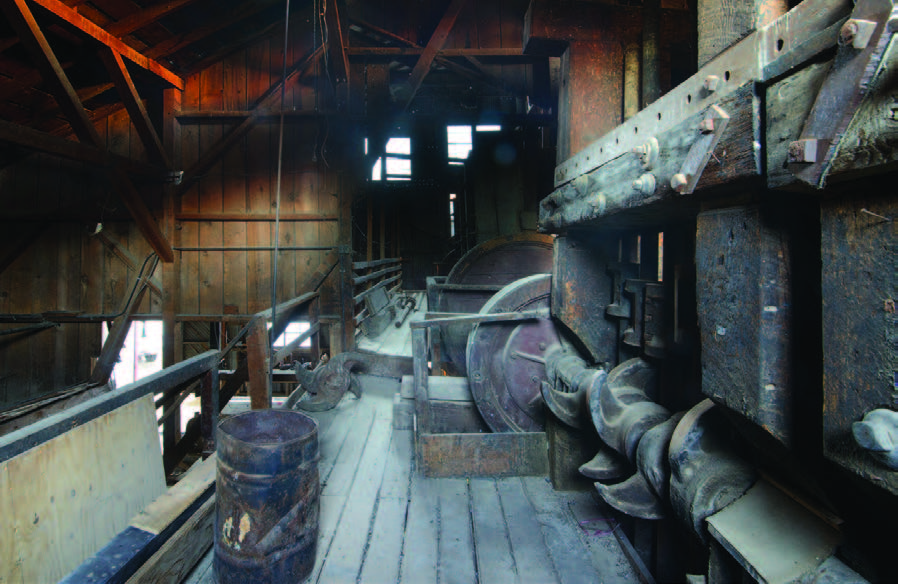Shaping History at Donovan Mill
January-February 2018
Mining technology was perfected on protected Comstock site.
BY LISA GAVON
Tears of joy and sorrow have both been shed at the site of Donovan Mill in Silver City. The intense and unexpected changes that follow the boom and bust cycles of small Nevada mining towns have been the only constant. Pioneering new ideas and techniques were discovered and put into action here: a place rich with mining innovation, as well as with gold and silver. Originally the land was an idyllic part of the hunting and gathering territory of the Washoe Tribe. The possibility of wealth brought speculators and adventurers, eventually changing the landscape forever. The community, settled in 1859, was filled with people who proved themselves to be independent, resourceful, and self-motivated.
THE PRODIGY PLOT
Melville Kelsey bought the parcel for $1,500 in 1861, building the Kelsey Mill with 15 stamps and a 40-horsepower boiler. They used the Washoe pan amalgamation process utilizing mercury, salt, and copper sulfate to remove precious metals from the ore. With a population of roughly 1,500 souls, Silver City was thriving. The Kelsey Mill changed hands four times before it was dismantled in 1878, the last of the Bonanza years on The Com- stock. The economy plummeted, as did the number of people living there. With the town having only 200 residents, the Virginia & Truckee Railroad even removed its spur. After discovering a large deposit in the American Ravine, Silver City miner Felix Lacrouts organized the Independent Mining Company with fellow miner Napoleon Landry. Lacrouts had Virginia City liquor dealer Jean Dazet back the building of the new Dazet Mill on the old Kelsey site to work his find. They initially built a classic California five-stamp mill with copper amalgamation plates to capture the gold, before upgrading to a ten-stamp mill in 1862. It is still standing on the Donovan Mill property today.
As often happened during the mining era, drama ensued with disagreements among partners, and Lacrouts’ mine operation was shut down. Dazet leased the mill to a series of small operators while attempts by Lacrouts to re-open the claim led to guns being drawn, and then to prolonged court battles.
NEW HANDS, NEW METHODS
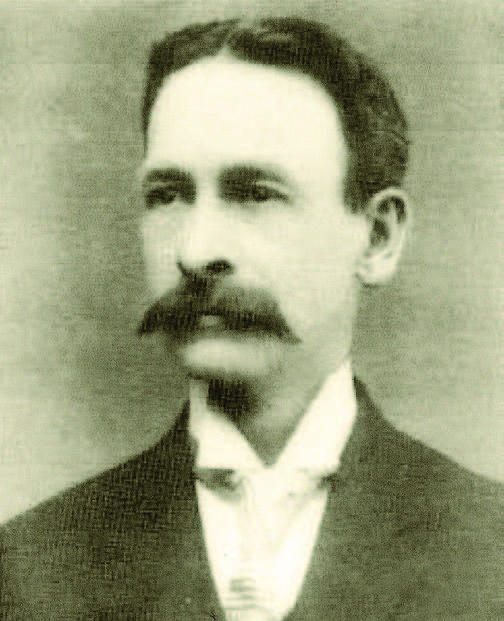
The Dazet Mill was purchased by University of Neva- da, Reno Professor Robert D. Jackson in 1895. In addition to preparing students for careers in mining, he was a true inventor. His work involved perfecting the first successful use of the MacArthur-Forrest cyanide process on difficult-to-treat gold and silver ore found on The Comstock. Developed in the 1880s, the revolutionary MacArthur-Forrest cyanide process involved extracting gold and silver by converting the metals to a water-soluble mixture by exposing ore to cyanide. The process replaced mercury amalgamation because it retained more of the value of precious metals, was simpler, and increased profits. Jackson’s improvements, which were engineered at the mill, enhanced the already innovative process. He patented a vacuum filter to separate the cyanide solution from the tailings, settling tanks, and agitators. He also found that bases like lime and oxygen were essential components to the process. This was the first time the cyanide process was used successfully in Nevada, and components of the improved process are still in use in modern operations around the world.
Chemistry Professor Dr. J. Warne Phillips worked with Jackson at the university and became his partner at the mill. While Jackson explored other sites, Phillips installed electrical power and motors to run everything. He created a derrick and boom system for moving tailings into vats. Under Phillips’ supervision, the plant only ran during the spring and summer months. Mining lessees (called “tributers”) worked the claims left unattended from the boom years, and Phillips processed their findings. Jackson’s plant was an example of the revolution in the science of mining: requiring the knowledge of trained metallurgical engineers and dedicated chemists.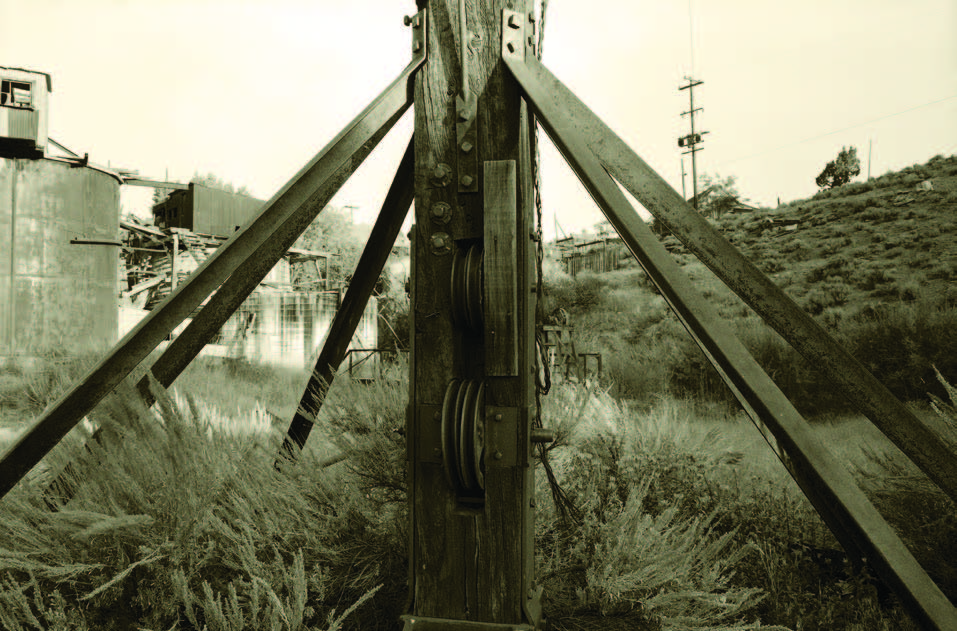
Larger cyanide plants started to spring up nearby, creating competition. Profits began to fail around 1903. After a lawsuit came between the two, Phillips ended up buying out Jackson. He updated the plant and kept it current for the next several decades.
FAMILY TRADITION
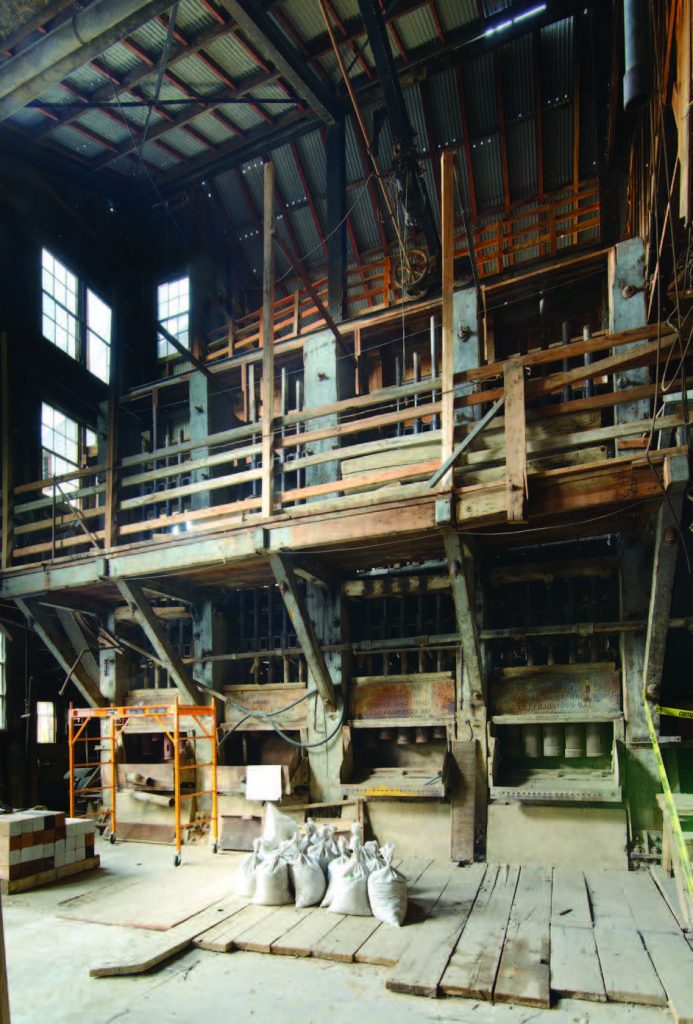 Old Comstock miner William Donovan, Sr. was from County Cork, Ireland. He settled in Virginia City working underground until 1890, when John Mackay put him in charge of leasing out the Silver Hill Mining Company. Donovan’s three sons, William Jr., Charles, and James worked side-by-side with their father. William Sr. purchased the property that would become known as Donovan Mill in 1912, making good profits until World War I ended in 1918.
Old Comstock miner William Donovan, Sr. was from County Cork, Ireland. He settled in Virginia City working underground until 1890, when John Mackay put him in charge of leasing out the Silver Hill Mining Company. Donovan’s three sons, William Jr., Charles, and James worked side-by-side with their father. William Sr. purchased the property that would become known as Donovan Mill in 1912, making good profits until World War I ended in 1918.
After studying at the Mackay School of Mines, William Donovan Jr. was well equipped to understand new concepts, and enact them at the mill. He was continually expanding and remodeling. He had an appreciation for the validity of the historical techniques, and a deep desire to preserve the mill that had become part and parcel of his family story.
William Sr. moved to Reno in 1923 and died during the second year of The Great Depression, leaving William Jr. and Charles entirely responsible for the mill. The purchase price of gold rose, causing desperate miners to scurry back to Silver City. William Jr. created an enlarged, fully-integrated cyanide operation. Donovan Mill was a key factor in making this district of small mines possible.
When Charles passed from an illness a decade after his father, William Jr. carried on alone. His first solo year, he added a wing to the mill with 145,000-gallon leaching tanks. The location was too level to facilitate a gravity fed system, so they used conveyors, clamshell scoops, and backbreaking labor.
TOIL AND TEAMWORK
Farmers in the valley said that oils, acids, and other refuse from The Comstock mines and mills were damaging their land. They tried to get a restraining order to keep pollutants from reaching the Carson River. The year was 1936, and William Donovan Jr. was one of the 17 people sued. He was selected to represent all of the mill men. With both mines and farmland at stake, an agreement was reached to reroute contaminants away from Gold Creek and into a field on the flats above. The road down canyon was moved, and a lawsuit was averted.
The Nevada Mining, Reduction & Power Co (known as Rock Point Mill) was located along the river in Dayton. When it closed in 1938, William Jr. tore it down, upgraded Donovan to 30 stamps, and added another ore bin and conveyor structure. He purchased a primary crusher and started using the Merrill-Crowe cyanide process.
He married Gladys Wittenberg and made her a full partner. She became not only the singular female mill owner on The Comstock and in Nevada, but also in the U.S. This was a significant event, earning Gladys and her husband a special place of recognition in mining history. Historian Dan Webster toured the site in the 1970s and reported that Gladys single-handedly operated the mill and did the assaying while her husband worked the mine.
Forced to close the mill by a government production order three years into World War II, William Jr. had to find other work. Reopening as soon as the war ended, he created Double King Mines to hold new mining claims and the mill. He was president, and Gladys served as secretary. They removed the copper amalgamation plates, and added a ball mill grinding circuit.
Because the price of gold was not high, it was another difficult time. Donovan became the only mill on The Comstock to even stay open. William Jr., a business partner, and Gladys did all the work themselves with no other employees. Like his grandfather and father before him, their son, Mike, learned the skills of the trade from his family.
TIME CAPSULE CONSERVED
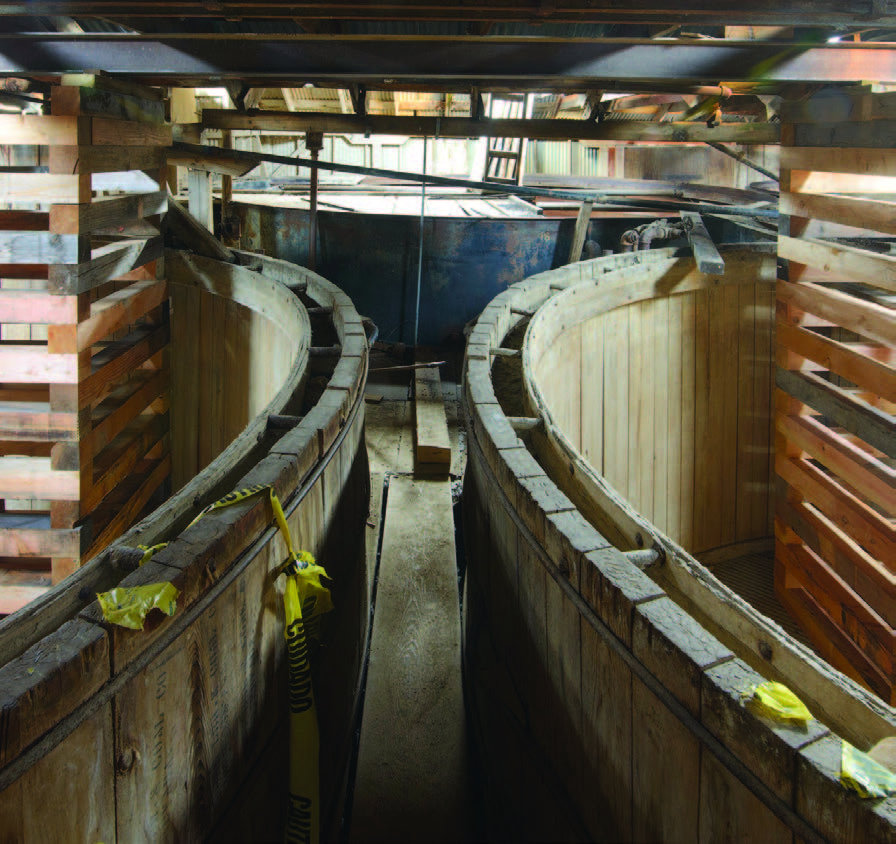 Donovan Mill closed after 47 years of operation in 1959. William Jr. became a board member of the Nevada State Museum, playing an important role in acquiring the Carson City Mint building, and coordinating creation of the well-known underground mine exhibit. He even hired out-of-work miners to build it. After his father and mother died, Mike boarded up the mill in 1975. In 1980, the site was added to the National Register of Historic Places and the Comstock Historic District. The Comstock Foundation for History and Culture bought the mill in 2014. It has started to restore structural integrity, interpret the experiences of people involved, and document changes in mining technology. The Snowshoe Thompson Chapter #1827 of E Clampus Vitus recently erected a plaque acknowledging the importance of the site.
Donovan Mill closed after 47 years of operation in 1959. William Jr. became a board member of the Nevada State Museum, playing an important role in acquiring the Carson City Mint building, and coordinating creation of the well-known underground mine exhibit. He even hired out-of-work miners to build it. After his father and mother died, Mike boarded up the mill in 1975. In 1980, the site was added to the National Register of Historic Places and the Comstock Historic District. The Comstock Foundation for History and Culture bought the mill in 2014. It has started to restore structural integrity, interpret the experiences of people involved, and document changes in mining technology. The Snowshoe Thompson Chapter #1827 of E Clampus Vitus recently erected a plaque acknowledging the importance of the site.
Many past events and curiosities distinguish this relic of a bygone era. The greatest of these may be that it still exists in its original location. Skeletons of remaining buildings and machinery offer a tactile and spatial feeling for the scale of operations, a deeper understanding of the technology, and insight into the complexity of procedures used. It can only be experienced by actually being there, and though the mill can currently only be enjoyed from the road, the foundation’s concept is to create an interpretive center honoring the heritage of mining culture, illustrating the true grit of Silver City inhabitants, and allowing visitors to imagine what it was really like to be alive during this groundbreaking period in the saga of the West. Donovan Mill stands as a symbol of vital transformations in Nevada mining history.


